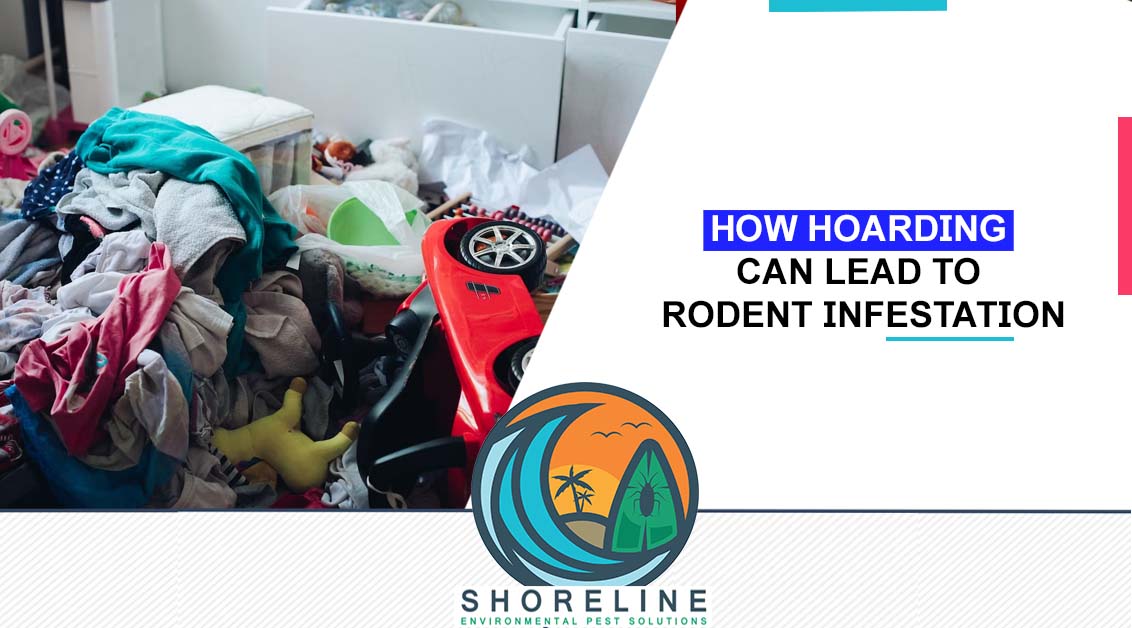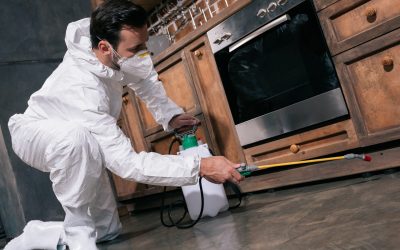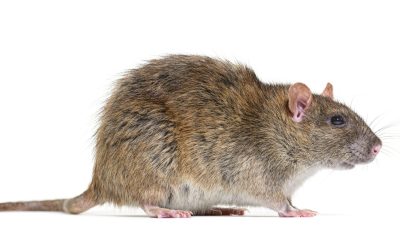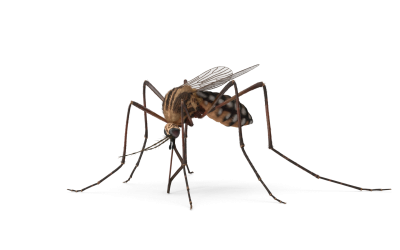Hoarding is a serious issue, not just for the individual engaging in it but for their neighbors and community. One of the major risks associated with hoarding is the potential for rodent infestations.
In this blog post, we’ll explore how hoarding can lead to rodent infestations and provide tips on how to prevent them from happening. From creating clutter that provides shelter for rodents to leaving food out in the open, there are several ways that hoarding can attract these unwanted guests. We’ll also discuss the health risks associated with rodent infestations and why addressing any hoarding behaviors is essential early on. So if you or someone you know struggles with hoarding tendencies, keep reading to learn how it can impact your home and health.
What is Hoarding Disorder?
Hoarding Disorder is a mental health issue where individuals struggle to part with their belongings, resulting in cluttered living spaces and structural safety risks. It can lead to rodent infestations and other serious health hazards. Treatment may include therapy, medication, and assistance from professional organizers or cleanup services.
The Connection between Hoarding and Rodent Infestation
Hoarding Disorder, a mental health condition characterized by excessive accumulation of possessions and difficulty in discarding them, not only leads to disorganization and structural vulnerabilities but also creates an ideal environment for rodents to thrive.
Cluttered living spaces provide ample hiding places and nesting materials for rodents, making detecting entry points difficult. This behavior can exacerbate structural damage, plumbing issues, mold growth, and sanitation problems that attract pests. Early intervention through professional help and decluttering strategies can prevent severe rodent infestations, further affecting personal hygiene, daily life quality, and emotional distress.
How Hoarding Leads to Rodent Infestation
Rodents can easily thrive in a hoarder’s living space due to cluttered surroundings that provide ample hiding places and nesting sites. Moreover, the accumulated clutter created through hoarding makes it challenging to detect a rodent infestation and take timely action. Additionally, structural damage caused by hoarding behavior leaves gaps and cracks, which worsen with time and breed rodents that further increase the severity of the infestation.
Preventing such infestations involves addressing hoarding disorders or tendencies through decluttering, regular cleaning, and professional help. Professional cleanup and pest control services are also crucial in controlling the pest population and preventing further damage.
Accumulation of Clutter and Debris
The accumulation of clutter and debris is one of the primary reasons behind severe rodent infestations in living spaces. People who hoard often create an ideal environment for rodents by keeping piles of belongings that provide shelter and nesting opportunities to these pests. These rodents often use those collected items as a food source, encouraging them to stay longer in that area.
Moreover, accumulated clutter often creates structural weaknesses, such as holes in walls or floors that offer easy entry points for these pests. Due to this reason, it becomes harder to detect signs of rodent infestation in spaces where people hoard excessively. Hence proper cleaning and decluttering are essential for sanitation and preventing severe health hazards caused by rodents’ presence.
Neglected Hygiene and Odors
Poor hygiene and neglectful cleaning practices are some of the worst consequences of hoarding disorder. In hoarder homes, rodents can quickly take over due to these destructive policies, like leaving trash uncleaned or not taking a bath regularly. The strong smells and rancid odor from piles of junk attract pests like rodents, feces, insects, and other vermin, which cause health hazards to people living in such places.
The inability to get rid of clutter attracts pests such as mice or rats, who use the stack as a nesting opportunity for shelter. Early intervention through decluttering and addressing structural damage caused by hoarding ensures the prevention of severe rodent infestations leading to distress among family members.
Hoarding of Food and Appliances
Hoarding of food and appliances is a common trait among people with hoarding disorder. They tend to stockpile food items and devices, making it challenging to keep track of expiration dates or detect signs of pest infestation. Rodents are attracted to these foods and can easily find their way into the cluttered spaces in search of a meal.
The hoarded appliances also create hiding spots for rodents, making it harder to spot them until they have caused significant damage. The wiring in these appliances is also at risk of being chewed through by rodents, leading to electrical fires in extreme cases.
Structural Vulnerabilities
Hoarding can create structural vulnerabilities in a home, making it easier for rodents to enter and take over. Piles of clutter can block or clog vents, leading to poor ventilation and creating warm, moist environments where rodents thrive. Additionally, cracks or holes in walls and floors can provide easy entry and exit points for rodents, making it challenging to keep them out.
Properly maintaining a home’s structure by regularly inspecting and repairing any damage caused by hoarding can prevent rodents from entering and causing severe health hazards.
The Severity of Hoarding and its Impact on Infestation
The severity of hoarding directly affects the likelihood of rodent infestation. The more cluttered and disorganized a space is, the easier it is for rodents to hide and breed. As hoarded items accumulate over time, they provide ample nesting opportunities for rodents who can reproduce quickly and in large numbers.
It is crucial to address hoarding habits early on to prevent severe infestations that can lead to health hazards such as exposure to disease-causing bacteria, parasites, and allergens found in rodent droppings and urine.
The Five Levels of Hoarding
There are five levels of hoarding, ranging from minimal clutter to severe hoarding disorder. At the first level, the mess is not excessive and does not interfere with daily activities. However, as the levels progress, clutter becomes more severe, and the home becomes increasingly unsanitary.
At the highest level of hoarding disorder, rodents can easily thrive due to the excessive accumulation of items and lack of cleaning. Additionally, the psychological impact of severe hoarding disorder can make it challenging for individuals to seek help or recognize the severity of their situation.
Prevention Strategies for Rodent Infestation
It is essential to take proactive measures to prevent rodent infestation caused by hoarding. First, keep the home clean and uncluttered. Second, seal all possible rodent entry points, such as gaps in walls, floors, and ceilings.
Third, use rodent-proof containers for food and other items that attract rodents. Fourth, schedule regular pest control inspections and treatments to address issues before they escalate. Finally, seek professional help if hoarding habits become severe and interfere with daily life.
By implementing these prevention strategies, individuals can avoid the detrimental effects of rodent infestations caused by hoarding. Recognizing and addressing hoarding habits early on is crucial to ensure a safe and healthy living environment for oneself and others.
Decluttering and Regular Cleaning
Effective prevention of rodent infestation caused by hoarding behavior requires regular cleaning and decluttering. Removing potential hiding spots by decluttering your house often and keeping the living space clean can help prevent rodents from invading your home. Sealing any cracks or gaps in the walls, floors, and ceilings is essential to prevent rodent entry while storing food in airtight containers and tightly closed garbage cans.
Using natural remedies like peppermint oil or ultrasonic devices to deter rodents from entering your home. Ensure you prioritize regular cleaning and decluttering of your home to avoid the risk of a severe rodent infestation.
Professional Cleanup and Maintenance
Professional cleanup and maintenance services are essential in preventing rodent infestations. With their expertise, professionals can identify and seal off rodent entry points while removing clutter and debris that serve as hiding spots for pests.
Regular maintenance, like cleaning up spills and storing food, will discourage rodents from entering your living space. Working with a professional who understands rodent behavior is crucial in implementing effective prevention strategies, maintaining healthy living conditions, and avoiding mental health disorders like hoarding or obsessive-compulsive disorder.
In conclusion, hoarding tendencies and rodent infestations are undeniably linked. The accumulation of clutter and debris, neglected hygiene, hoarding of food and appliances, and structural vulnerabilities all contribute to creating entry points for rodents. Understanding the severity of hoarding disorder and its impact on infestation is essential to prevent severe consequences. Prevention strategies such as regular cleaning, professional cleanup, and maintenance can significantly reduce the risk of infestations. Early intervention is crucial in managing hoarding disorder through behavioral therapy and OCD treatment. Don’t wait until it’s too late – take action today to protect your home from unwanted pests.





0 Comments